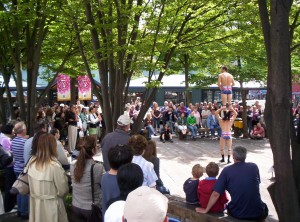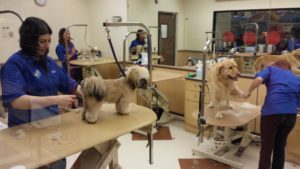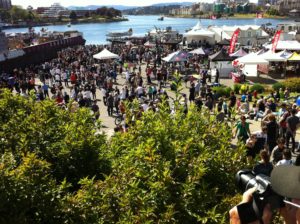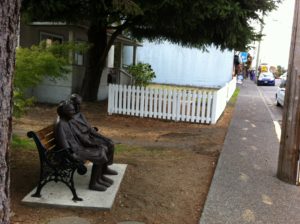Three Big Truths
Urban magnets are predicated on the following principles:
1) The people are the place – Vital places are filled with “human-doings” ~ people doing things – living out loud and physical form is based on responding to their activities and desired experiences.
2) Activity is the new community – a community built around a common ground created by shared interests and activities is one of the cornerstones in contemporary diverse society where more conventional aspects of common ground and identity are less dominant than they used to be.
3) Authenticity is based on unselfconscious activity and form – Authentic places are where the form grew out of the “function” of its users in what appears often to be an unselfconscious manner – and that unselfconscious function continues. The reason why many places (especially retail and resort environments) feel contrived is because they are in fact consciously contrived and while they may be “nice”, they are to perfect and limited to create a real personal connection with people. Authenticity is based on “production,” not consumption or customer-orientation.
Two Core Principles
There are a few core principles of Urban Magnet theory:
1) The Living Room Principle – People feel at home in different places based on whether the aesthetic character of that place reflects back to them their sense of identity and values. Your grandmother feels at home in her “living room” because it does two things – it accommodates her lifestyle and reflects her values and identity in its aesthetic decoration. As much as you may love your grandmother, you will not likely feel as “at home” in her living room as you will in yours. And its the same for urban spaces. The living room principle states that we will gravitate to places in a city that both accommodate our preferred lifestyle activities and reflect back to us our identity and values.
2) The Bonfire Principle – The bonfire principle states that to create a place if high energy, you need to start with a small fire and then grow it from there over time. Successful Urban Magnets often start with a small fire – a store or place that draws an activity subculture and then it grows over time – drawing more from that subculture and then ultimately many of the rest of us to watch, experiment or just be entertained by them.
Two Problematic Syndromes in City Building
Our cities, new developments, shopping areas and so-called ‘revitalized downtowns’ are often infected with two syndromes:
1) The “wax museum syndrome” – This syndrome speaks to places that look nice and look like they should be real, but there is no personality or real unselfconscious people there when you engage it (…so much for an interesting time or conversation). The inherent economic and social fabric of the community and its unique eccentricities and patterns are ignored in these situations in favour of a formal typology or set of guidelines defining an intellectual model of “how things should be.”
2) The “baited city syndrome” – The result of design focused on attracting people primarily to go shopping – which translates in reality into designing interesting things for the sole purpose of getting people to part with their money ~ arrive, be subjected to any number of sales pitches, buy, leave, and then feel slightly empty. People never feel truly at home in these places as their deep, sometimes barely conscious interaction with the place is either a guarded one against the force of sales or one of ignoring the place entirely in their intense search for something to buy.



